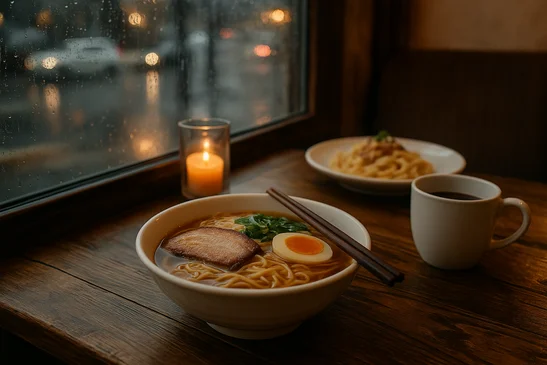Let’s start by noting that even after residing in The Kingdom for a decade, you’ll likely still be discovering new dishes. While similar dishes with slight variations make up a part of these, there exists a dazzling variety that makes Thai cuisine some of the most alluring in the world.
Yam Hua Bplee
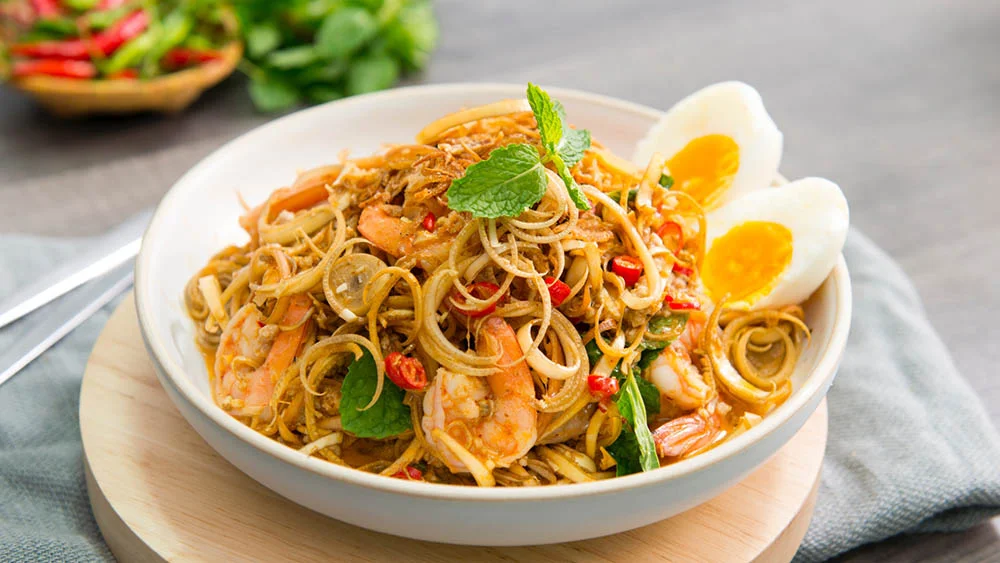
Yam Hua Bplee | Credit: Wongnai Exclusive on Line TV
Situated in the “salad” (yam) category of dishes, this creamy, savory dish is concocted from the bulbous flower of the banana tree. The flower is sliced into thin strips and typically soaked in salt water with lime to prevent browning. Although usually made with boiled shrimp and sometimes minced pork, it can be easily adapted for vegetarians.
The sauce is created with fresh coconut milk, sweet chili paste, fresh chilies, fish sauce, lime juice, and palm sugar. Mint leaves, fried shallots, and boiled egg top it off to create a unique dish utilizing the often overlooked, yet abundant, banana flower.
Yam Som Oh
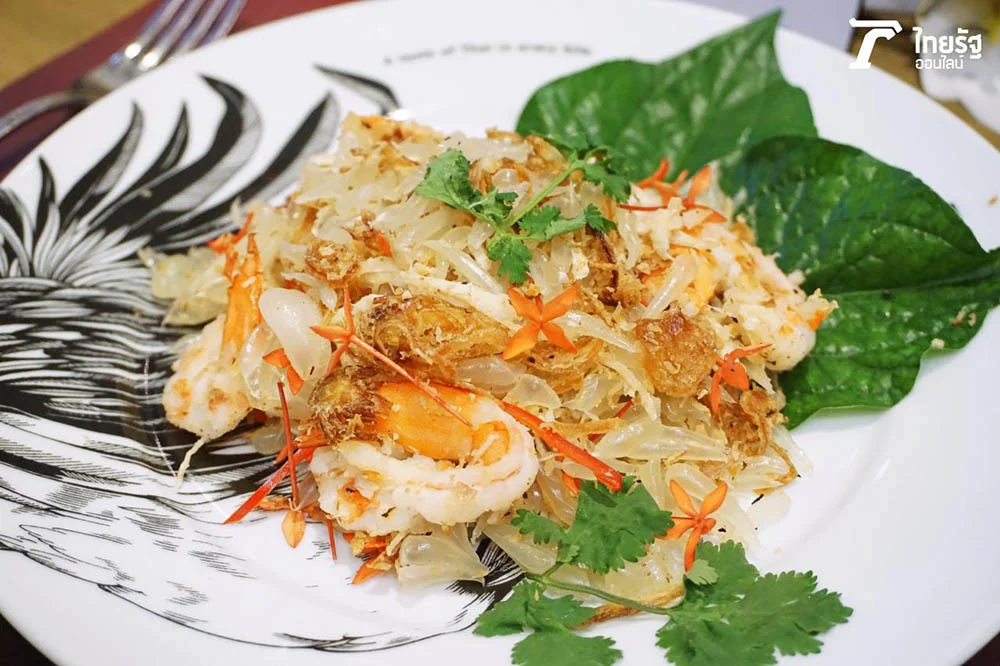
Yam Som Oh | Credit: Thairath Online on thairath.co.th
Here’s another Thai “salad” that is a wildly intriguing dish, and while you won’t find it at every corner restaurant in Thailand, it’s not rare and is quite common in Koh Samui.
The namesake of this dish is the tangy pomelo fruit. A crowd-pleaser on its own, its creative use in this dish will make you see it in a whole new light.
Like the banana flower salad, yam sam oh usually contains whole boiled shrimp, chilies, fish sauce, palm sugar, and fried shallots. In addition, it includes garlic, grated fresh coconut, tamarind juice, kaffir lime leaves, and toasted peanuts. The combination of all these ingredients creates a surprising depth of exotic flavors that are balanced expertly.
Phad Pong Garee
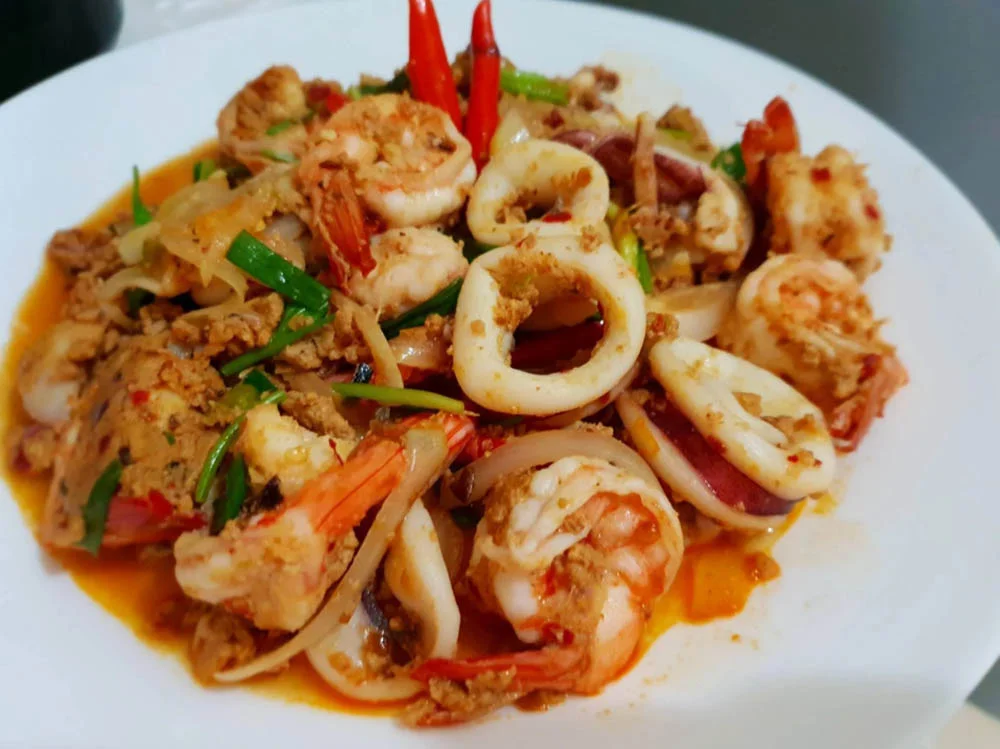
Phad Pong Garee | Credit: Wongnai Cooking on Wongnai.com
Although sporting a somewhat uninspiring name (stir fried curry powder), one taste and you’ll likely be inspired to order it again.
Traditionally this dish is cooked with crab, but it’s not unheard of to see it cooked with chicken or tofu nowadays. That being said, when this dish is done well with fresh soft shell crab, it’s a very special treat.
Most restaurants simply start with a pre-bought curry powder which blends a slew of ingredients including coriander, cumin, lemongrass, ginger, garlic, and much more. It’s not enough that the curry powder itself is loaded with flavorful ingredients, most recipes go even further by adding soy sauce, coconut milk, chicken stock, oyster sauce, sugar, and more. Scramble in an egg, some more garlic, and Chinese celery and you’ll be questioning how you made it so far in life without tasting this dish.
Gaeng Ki Lek
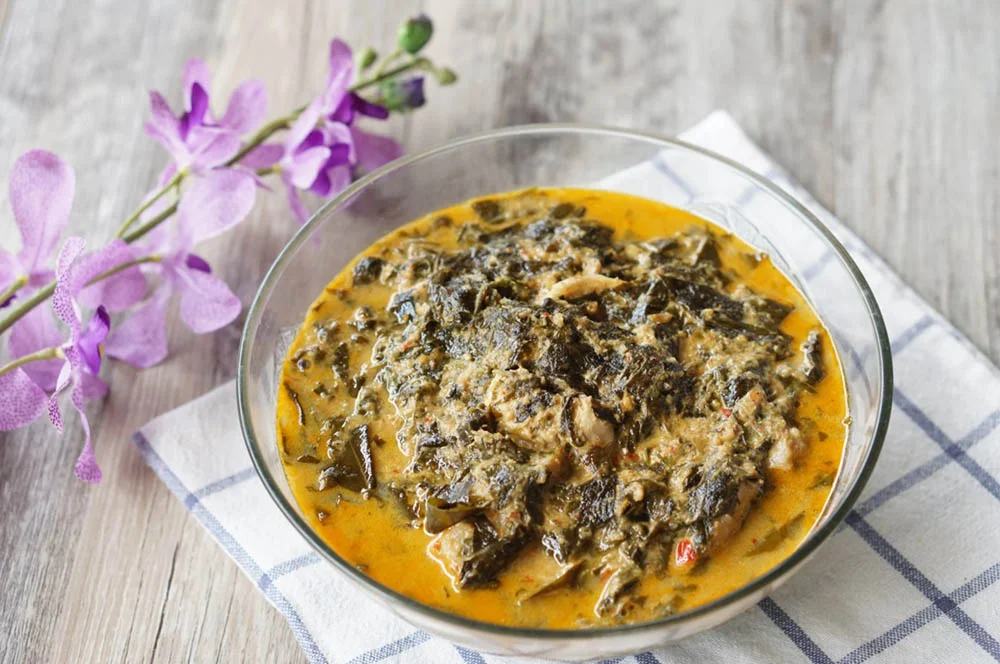
Gaeng Ki Lek | Credit: Wongnai Cooking on Wongnai.com
Here’s one for the slightly more adventurous or those who can handle a little spice. Many never give this dish a chance as it appears as a leafy green saucy mush, not to mention since it is rarely found at normal restaurants, rather as one of many pre-made offerings at Thai fast food joints known as khao gaeng.
First of all, these unassuming eateries are everywhere, are rarely presented with any fanfare or fancy facades, are inexpensive, and can offer some of the best Thai food you’ll ever have.The added bonus is that you order a plate of rice and add small portions of different dishes so it’s a great way to try new things – it’s also convenient that it’s all on display so you don’t have to know the names of the dishes in Thai.
The main ingredient in gaeng ki lek is the leaf of the cassia tree. The leaves are very bitter and the trick to making them palatable is boiling multiple times.
The dish includes garlic, shallot, galangal (the ginger lookalike found in tom yum soup), two types of chilis, lemongrass, fingerroot/Chinese ginger, coconut milk, fish sauce, and more. Although it’s sometimes made with pork, you’ll typically find it with small pieces of big eye mackerel here in the south.
Certainly some people will never try this dish simply due to aesthetics, while others will find it too spicy or simply never find it available at the restaurants they visit. However, when cooked properly this dish is unlike any other while the creamy-sweet coconut milk, bitter-sour cassia leaves, and delicate-savory mackerel mingle in such a way to make the taste buds sing.



